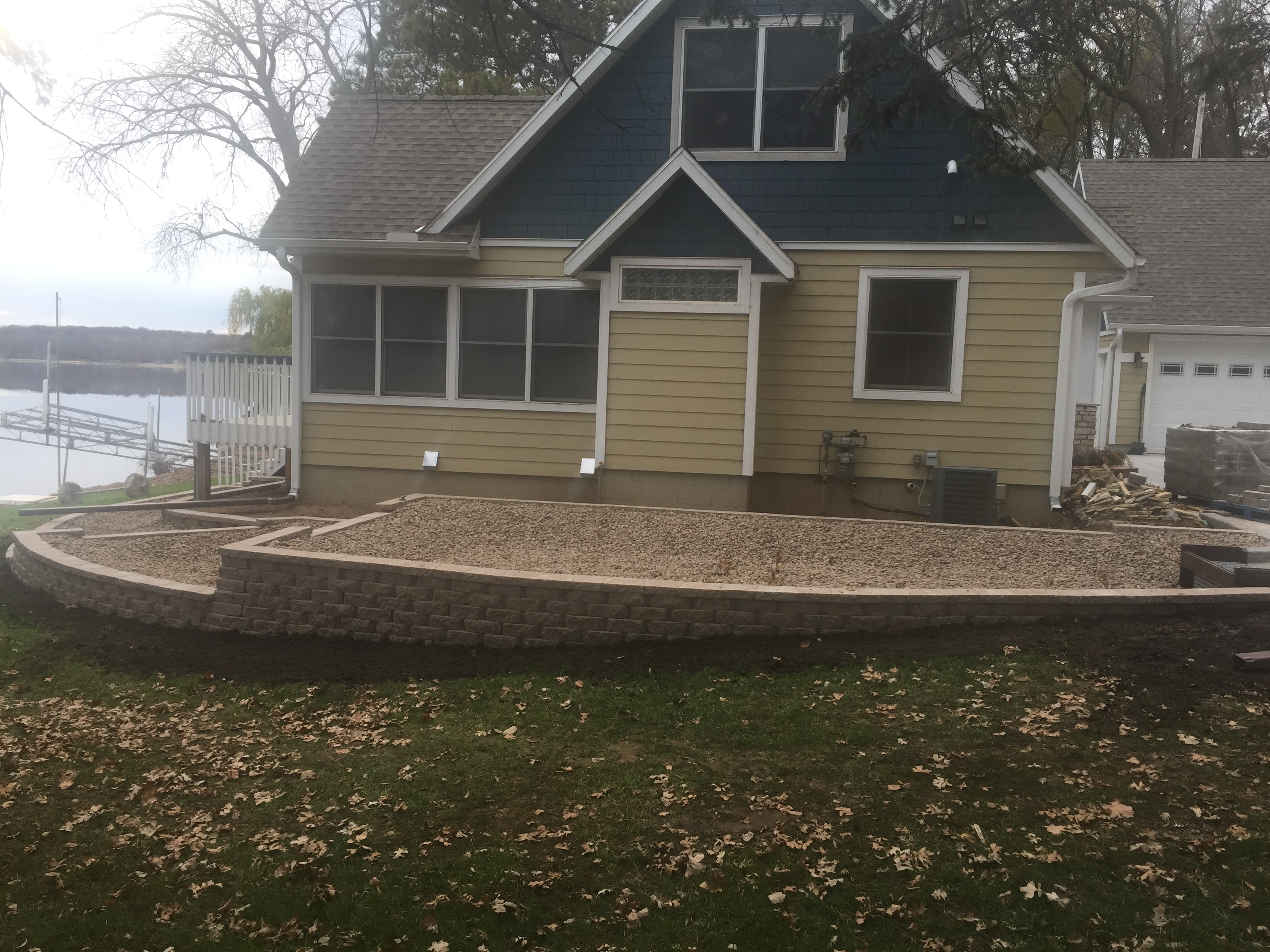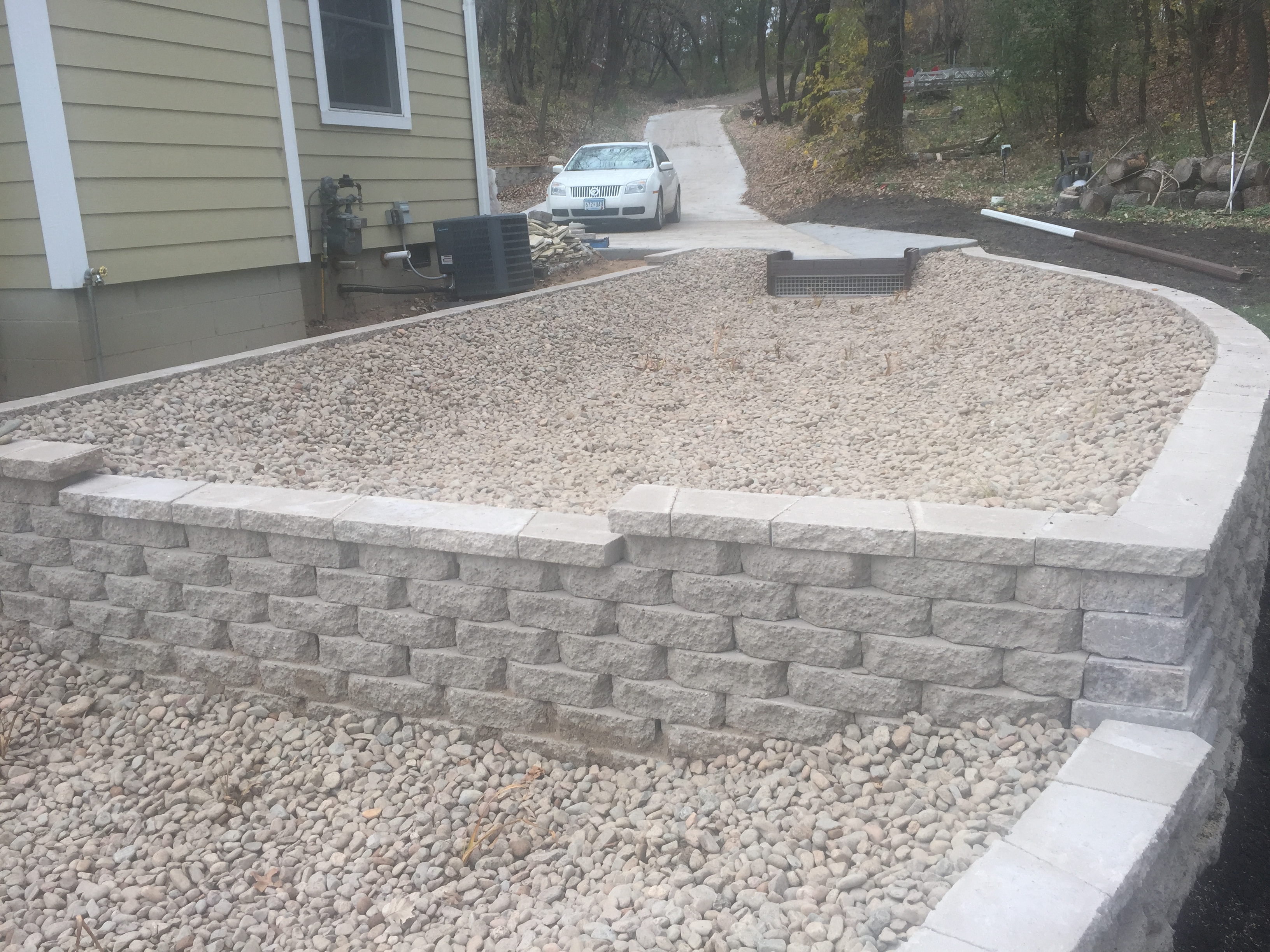Residential Landowners

Urban and residential areas offer a unique conservation challenge. Rain water that once was able to soak into the ground in a forest or on the prairie now hits hard surfaces such as pavement, rooftops and compacted soils and runs off of the land as stormwater runoff. Stormwater runoff often flows over these hard surfaces and directly into a nearby lake, river or a nearby stormdrain. Along the way, the rain picks up pollutants such as fertilizer, sediment, pet waste, and chemicals from vehicles. These pollutants reduce the health of lakes and rivers and the plants and animals that need clean water to survive. Reduced water health can also impact lakeshore values, recreational opportunities, fishing and aesthetics. The best way to keep our waters clean is by making sure that the stormwater running into them is clean.
What can you do to reduce stormwater runoff?
As a homeowner, you can help avoid the problems associated with stormwater runoff by:
- Reducing impervious areas (i.e. hard surfaces such as sidewalks, roads, patios, etc….) so that rain soaks into the ground.
- Planting native trees and plants. They help infiltrate stormwater and increase evapotranspiration.
- Manager your own stormwater using rain gardens, rain barrels, and other similar practices.
The SWCD may be able to provide technical assistance to make recommendations for or to design a project to reduce rainwater runoff from your property. We may also have funding available to assist with the costs of installing a project.
Rain Gardens: You can do it! A rain garden is simply a garden that is placed in a shallow depression in the ground and planted with native plants that like to get their feet wet. The depression collects and allows stormwater runoff to slowly infiltrate into the soil (they mimic what rain did before humans changed the landscape). Native plants, mulch and soil in the rain garden naturally remove pollutants contained in the stormwater.
Here is a recently installed rain garden on Green Lake. Check back next summer to see how much the plants have grown!


A rain garden will
- Filter water to remove sediment and pollutants.
- Allow water to soak into the ground(they mimic what rain did before humans changed the landscape).
- Reduce the volume of water going into the stormwater system (otherwise, stormwater is not treated before it enters rivers, lakes and streams).
- Create wildlife habitat—use recommend using ONLY plants that are native to Minnesota.
Where to put your rain garden
- Near a downspout
- Near a driveway, road, or sidewalk
- At the base of a slope

Benefits of a Rain Garden
- Insects, birds, and other wildlife will feed, rest, or live in the garden (think pollinators!).
- Drought resistant plants will look great all summer long, even when turfgrass is dormant from lack of water.
- There is no need to fertilize native plants because they are adapted t our conditions and will grow well without it.
- Where there is a garden, there is not mowing!
Helpful Resources for Rain Garden Information
Blue Thumb: Public/private partnership that makes it easy for you to plan, purchase and plant rain gardens! http://www.blue-thumb.org/
City of Isanti Rain Garden Incentive Program: this site has City specific program information and general information about planning and planting a rain garden. https://www.cityofisanti.us/resident/rain-garden-incentive-program.
University of Wisconsin Extension Rain Garden How-to Manual for Homeowners: http://clean-water.uwex.edu/pubs/pdf/rgmanual.pdf
Rain Barrels are another way to use rainfall in your yard
A rain barrel is any type of container that collects and stores rain water from your roof that would otherwise run off into storm drains that flow directly into nearby lakes, streams and wetlands. Rain barrels typically hold 50 to 100 gallons of water than can be used on your lawn or flower garden. Rain barrels reduce the amount of stormwater runoff by collecting roof runoff and storing the rain water for future use.
Rain barrels are placed underneath shortened downspouts; thus, they divert roof runoff into the barrel. Water collected in the rain barrel can be used to water lawns and flower gardens.
Benefits of a rain barrel:
- They provide an alternative to tap water for watering lawns and flower gardens.
- Reduce runoff that can carry pollutants into lakes and rivers.
- They will help reduce peak water demands during the summer months.
Where to purchase rain barrels:
Mills Fleet Farm: https://www.fleetfarm.com/search?Ntt=Rain+Barrel
Home Depot: https://www.homedepot.com/s/rain%20barrel%20kit?NCNI-5&gsitesearch
You can also make your own, find out how by clicking here
Other Best Management Practices for Stormwater Infiltration:
https://stormwater.pca.state.mn.us/index.php?title=BMPs_for_stormwater_infiltration
